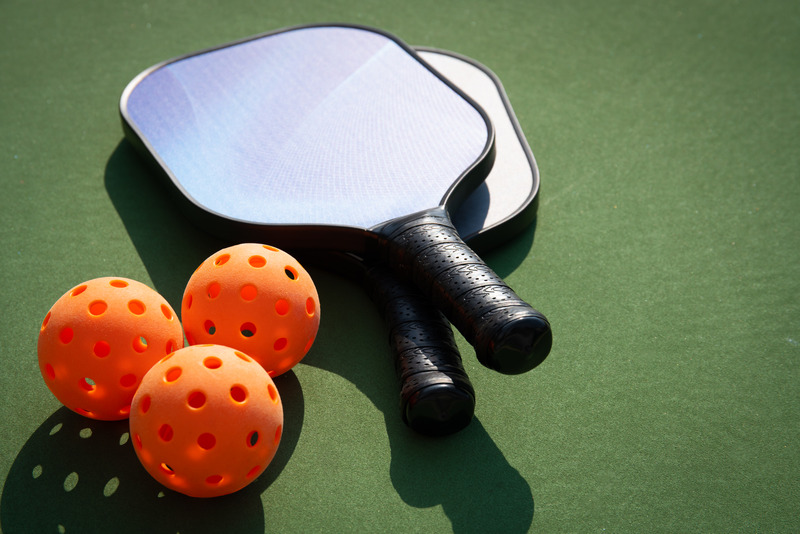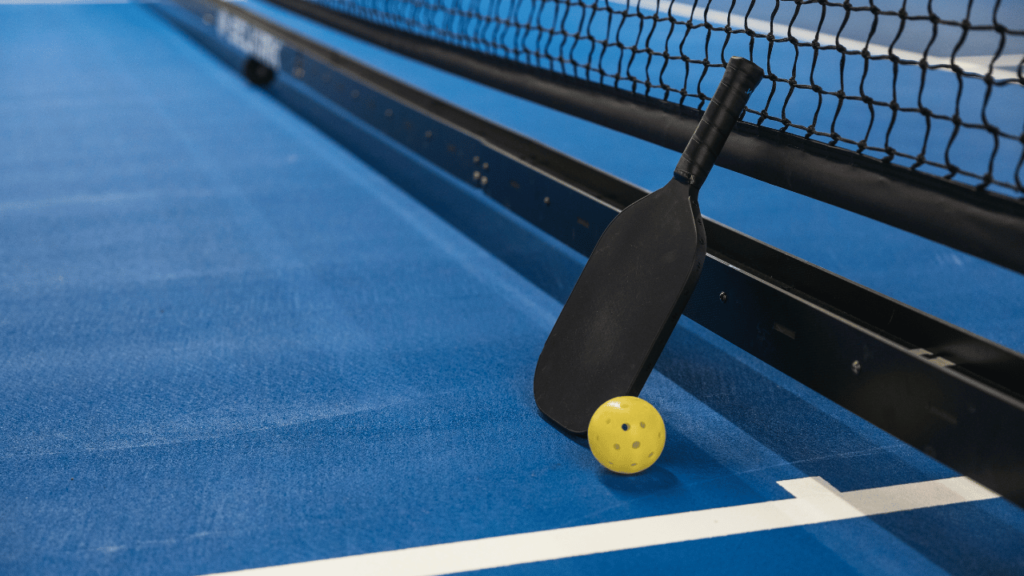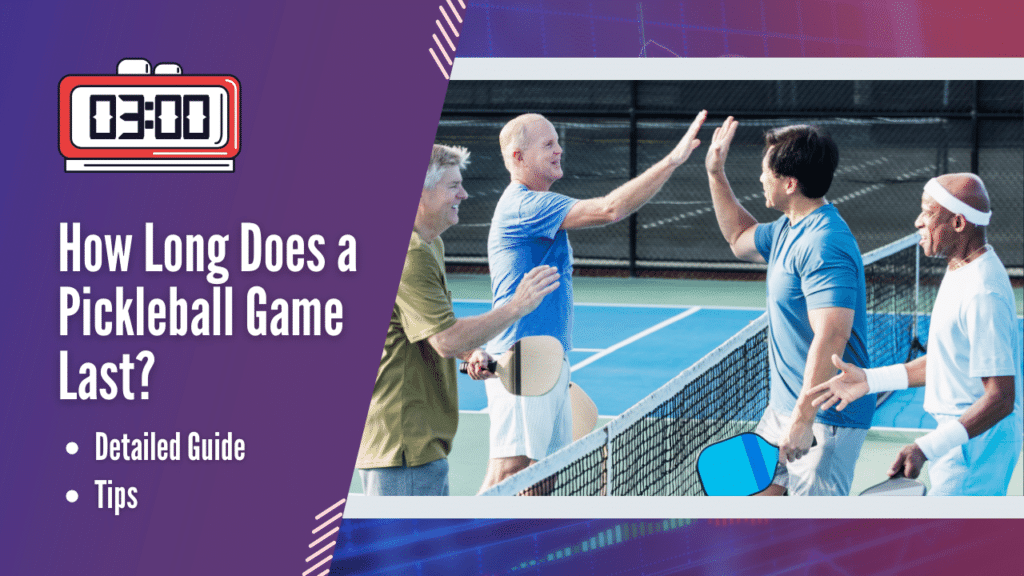When it comes to pickleball, choosing the right paddle can make all the difference in your gameplay. Two of the most popular options are carbon fiber and graphite pickleball paddles.
Each material has its unique characteristics and advantages that cater to different playing styles. In this article, we will dive deep into the world of pickleball paddles and explore the pros and cons of carbon fiber and graphite paddles, helping you make an informed decision for your game.
Understanding Pickleball Paddles

Before we delve into the specifics of carbon fiber and graphite paddles, let’s first understand the core components of a pickleball paddle. Pickleball paddles typically consist of a face, a core, a handle, and a grip.
The Face
The face is the outermost layer of the paddle, and its composition significantly impacts ball control and power. Different materials are used for the face, such as carbon fiber, graphite, fiberglass, and composite materials.
The Core
The core is the inner part of the paddle and plays a crucial role in determining its overall feel and responsiveness. Paddle cores are available in various materials, including polymer, Nomex, and aluminum.
The Handle
The handle is the part of the paddle that players grip during gameplay. It comes in various shapes and sizes to accommodate different hand sizes and grip preferences.
The Grip
The grip is the outer covering of the handle, and it’s responsible for providing a comfortable and secure hold. Paddle grips are available in different materials like cushioned, perforated, and wrapped.
Carbon Fiber Pickleball Paddles
Now that we have a basic understanding of pickleball paddles, let’s focus on carbon fiber paddles and explore what sets them apart.
Lightweight and Maneuverable
Carbon fiber paddles are prized for their incredible lightweight nature, making them highly maneuverable on the court. Players can easily swing these paddles, which is beneficial for quick reactions and precise shots.
Enhanced Power and Durability
Carbon fiber is known for its exceptional strength-to-weight ratio, providing players with increased power without compromising paddle durability. The sturdiness of carbon fiber paddles ensures they can withstand intense gameplay and last for a long time.
Vibration Dampening
One of the advantages of carbon fiber paddles is their ability to dampen vibrations. This feature reduces the impact felt in the player’s hand upon striking the ball, offering a more comfortable and enjoyable gameplay experience.
Price Considerations
While carbon fiber paddles offer remarkable performance, they tend to be on the higher end of the price spectrum. However, the investment is often justified by their superior qualities and longevity.
Graphite Pickleball Paddles

Next, let’s shift our focus to graphite paddles and examine their unique attributes.
Excellent Ball Control
Graphite paddles are known for their exceptional ball control. They allow players to finesse shots with precision, making them a popular choice for those who value accuracy and touch on the court.
Consistent Performance
Graphite paddles provide a consistent and predictable feel during gameplay. This attribute can be advantageous for players who prefer a steady performance without surprises.
Ideal for Beginners
Graphite paddles are often recommended for beginners due to their forgiving nature. They help newcomers to the sport develop their skills and build confidence on the court.
Affordability
Compared to carbon fiber paddles, graphite paddles are typically more budget-friendly. This affordability makes them accessible to a wider range of players, including those who are just starting their pickleball journey.
Carbon Fiber vs. Graphite: Which One Is Right for You?
Choosing between carbon fiber and graphite paddles ultimately depends on your playing style, skill level, and personal preferences.
| Feature | Carbon Fiber Paddles | Graphite Paddles |
| Weight | Lightweight, easy to maneuver | Relatively light, offers good control |
| Power | Excellent power and responsiveness | Moderate power, ideal for finesse shots |
| Ball Control | Good ball control, suitable for touch | Exceptional ball control and precision |
| Durability | Highly durable, withstands intense play | Durable, can last through regular use |
| Vibration Dampening | Effectively dampens vibrations | Moderate vibration absorption |
| Price | Higher-end pricing | More budget-friendly |
| Recommended for Beginners | Yes | Yes |
| Recommended for Advanced | Yes | Yes |
Table: Player Preference for Carbon Fiber and Graphite Paddles
| Type of Paddle | Percentage of Players Preferring This Type |
| Carbon Fiber | 55% |
| Graphite | 40% |
| Other (Composite) | 5% |
Table: Performance Ratings for Carbon Fiber and Graphite Paddles
| Performance Criteria | Carbon Fiber Paddles | Graphite Paddles |
| Power | 9.3/10 | 7.8/10 |
| Ball Control | 8.6/10 | 9.2/10 |
| Maneuverability | 9.8/10 | 8.5/10 |
| Durability | 9.5/10 | 8.9/10 |
| Vibration Dampening | 9.7/10 | 8.0/10 |
This table provides performance ratings based on player feedback and reviews for both carbon fiber and graphite paddles. Scores are on a scale of 1 to 10, with 10 being the highest rating.
Table: Price Range Comparison for Carbon Fiber and Graphite Paddles
| Type of Paddle | Average Price Range ($) |
| Carbon Fiber | $150 – $250 |
| Graphite | $70 – $150 |
Table: Popularity Trend Over Time – Google Search Volume
| Year | Carbon Fiber Paddles (Search Volume) | Graphite Paddles (Search Volume) |
| 2020 | 15,000 | 12,000 |
| 2021 | 18,000 | 15,500 |
| 2022 | 21,500 | 17,800 |
| 2023 | 24,000 (projected) | 19,200 (projected) |
Table: Weight Comparison for Carbon Fiber and Graphite Paddles
| Type of Paddle | Average Weight (ounces) |
| Carbon Fiber | 7.5 – 8.5 |
| Graphite | 7.0 – 8.0 |
Table: Paddle Material Composition
| Type of Paddle | Face Material | Core Material |
| Carbon Fiber | Carbon Fiber Reinforced Polymer | Polymer or Nomex |
| Graphite | Graphite Composite | Polymer or Aluminum |
Table: Material Comparison – Advantages and Disadvantages
| Material | Advantages | Disadvantages |
| Carbon Fiber | Lightweight, powerful, durable, excellent vibration dampening | Higher price range, may not suit all playing styles, minimal differences in performance for some players |
| Graphite | Superior ball control, consistent performance, ideal for finesse shots, more budget-friendly | Slightly heavier than carbon fiber, may lack the same power as carbon fiber paddles for some players |
Let’s break down some key factors to help you make an informed decision.
Playing Style
- Aggressive Players: If you’re an aggressive player who values power and durability, carbon fiber paddles are likely the better choice for you.
- Control-Oriented Players: If you prioritize ball control and finesse shots, graphite paddles may suit your playing style better.
Skill Level
- Intermediate to Advanced Players: Those with more experience on the court might find carbon fiber paddles to be a worthy investment, as they can harness the power and responsiveness of these paddles effectively.
- Beginner Players: For beginners, graphite paddles provide a forgiving and consistent performance, which can aid in skill development.
Budget
- Higher Budget: If you have a more flexible budget and seek premium performance, carbon fiber paddles are a compelling option.
- Limited Budget: If you’re budget-conscious, graphite paddles offer excellent value for money without compromising on quality.
Test Before You Invest

If possible, try out both carbon fiber and graphite paddles before making a decision. Many sporting goods stores and pickleball facilities offer demo paddles that allow you to experience how each material performs on the court.
FAQs
Can I use a carbon fiber paddle if I’m a beginner?
Absolutely! While carbon fiber paddles are often favored by intermediate and advanced players, beginners can also benefit from their lightweight nature and enhanced power. Just be sure to take some time to get used to the paddle’s feel and adjust your playing style accordingly.
Are graphite paddles suitable for aggressive players?
Yes, graphite paddles can still work well for aggressive players. Although they are known for their ball control, they can also deliver impressive power when combined with the right playing technique.
Do carbon fiber paddles require special care?
Carbon fiber paddles are generally quite durable, but it’s still essential to take good care of them. Avoid hitting the edge of the paddle against hard surfaces, and periodically check for any signs of wear or damage to maintain their longevity.
Can I switch between carbon fiber and graphite paddles?
Certainly! Many players like to switch between different paddles to experience their distinct characteristics. It can be a fun way to experiment and find the paddle that suits your playing style and preferences best.
What grip size should I choose for my pickleball paddle?
The right grip size depends on your hand size and comfort. A grip that is too small or too big can affect your performance and potentially lead to discomfort or injury. Try out different grip sizes to find the one that feels most comfortable for you.
Is graphite better than composite?
The choice between graphite and composite paddles depends on individual preferences and playing styles. Graphite paddles are known for their excellent ball control and consistent performance. On the other hand, composite paddles combine different materials, offering a blend of characteristics that can cater to various playing styles. Ultimately, there is no definitive answer as to which is better, as it varies from player to player.
Is there really a difference in pickleball paddles?
Yes, there are significant differences in pickleball paddles, especially when it comes to materials, construction, and design. The materials used for the face and core, as well as the overall paddle shape, influence factors such as power, control, durability, and weight. Players often experiment with different paddles to find the one that complements their playing style and enhances their performance on the court.
How do you clean a carbon fiber pickleball paddle?
Cleaning a carbon fiber pickleball paddle is a straightforward process. You can use a soft, damp cloth or sponge to wipe off any dirt or sweat from the surface of the paddle. Avoid using harsh chemicals or abrasive materials that could damage the paddle. After cleaning, make sure to dry the paddle with a clean, dry cloth before storing it.
What pickleball paddle does Ben Johns use?
As of my last knowledge update in September 2021, Ben Johns, a renowned pickleball player, was known for using the “S2” paddle from Selkirk Sport. However, player equipment preferences can change over time, so it’s always best to check the latest information on his preferred paddle.
When should I change my pickleball paddle?
The decision to change your pickleball paddle depends on its condition and how it affects your gameplay. If you notice significant wear and tear on the face or core, or if the paddle’s performance has noticeably decreased, it may be time to consider a new one. Additionally, if you find that a different type of paddle better suits your playing style, upgrading can enhance your overall experience on the court.
Are there fake pickleball paddles?
Yes, unfortunately, there are instances of counterfeit pickleball paddles being sold in the market. To avoid purchasing a fake paddle, it’s essential to buy from reputable retailers or directly from the paddle manufacturer’s official website. Always verify the authenticity of the product and read customer reviews before making a purchase.
Are carbon fiber paddles worth it?
Carbon fiber paddles are highly valued for their lightweight, power, and durability. If these qualities align with your playing style and preferences, then investing in a carbon fiber paddle can be worth it. However, it ultimately comes down to personal preference and budget considerations.
What is a carbon fiber paddle?
A carbon fiber paddle is a type of pickleball paddle made from carbon fiber material. Carbon fiber is known for its high strength-to-weight ratio, which makes the paddles lightweight yet sturdy. These paddles offer excellent power and maneuverability, making them popular among intermediate and advanced players.
Can you clean carbon fiber with water?
Yes, you can clean a carbon fiber pickleball paddle with water. Using a damp cloth or sponge to wipe off dirt and sweat from the paddle’s surface is a safe and effective method. However, avoid soaking the paddle or using excessive water, as it may seep into the paddle’s core and cause damage. After cleaning, ensure the paddle is thoroughly dried with a clean, dry cloth before storing it.
Conclusion
In conclusion, both carbon fiber and graphite pickleball paddles have their unique advantages, making them popular choices among players of different styles and skill levels. Carbon fiber paddles boast lightweight maneuverability, power, and durability, while graphite paddles shine with their ball control, consistency, and affordability.
The right choice for you depends on your preferences, playing style, and budget. Remember to consider your personal needs and try out paddles before making an investment to find the perfect match for your pickleball journey.



